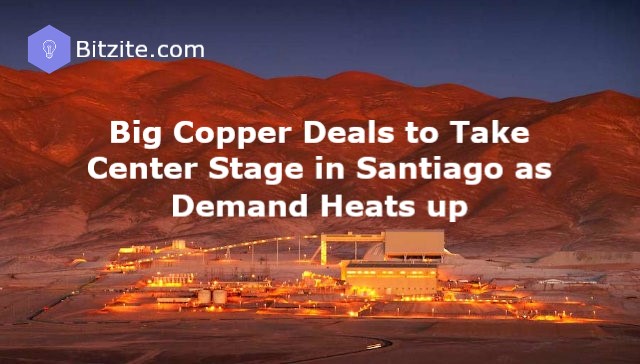The largest gathering of international copper producers since 2019 is taking place this week in Chile, and discussions are anticipated to focus on the industry’s growing M&A wave amid rising demand and limited supply for the metal that is a key component of the green energy revolution.
The industry’s attempts to establish new mines are being met with growing opposition from Indigenous organizations, host towns, and others. As a result of these challenges, mining corporations are beginning to realize that they may need to merge in order to expand.
Last month, Glencore Plc (GLEN.L) made a $22.5 billion acquisition bid for smaller rival Teck Resources Ltd (TECKb.TO), but Teck has so far turned down the deal in favor of its own copper-focused expansion strategies. Despite ongoing political unrest in Chile, Lundin Mining Corp. (LUN.TO) is paying roughly $1 billion to take ownership of the Caserones copper mine.
Around 450 investors, executives, analysts, and regulators will be attending the annual World Copper Conference in Santiago, Chile, including officials from all three businesses.
Since 2019, when the conference was last hosted entirely in person, registrations have increased by about 8%. As the week goes on, more people are expected to show up, according to the organizers.
Copper, the king of green metals, continues to benefit from the “green transformation” theme, according to Saxo Bank strategist Ole Hansen, who spoke to Reuters. Not least when you take into account the difficulties that producers will encounter in the coming years due to decreased ore grades, higher production costs, and a lack of investments in the previous years.
According to an S&P Global (SPGI.N) analysis, global copper consumption is anticipated to more than double to 53 million metric tons annually by 2053, but supply is still predicted to be insufficient. This forecast highlights the urgency of the deal.
The largest mining corporation in the world, BHP Group Ltd (BHP.AX), last week received shareholder approval for its $6.4 billion acquisition of Australian copper miner Oz Minerals Ltd. (OZL.AX).
In order to secure direct control over a massive Mongolian copper mine, Rio Tinto Ltd. (RIO.AX), which is facing fierce resistance for its Resolution Copper project in Arizona, paid rival Turquoise Hill $3.3 billion in December.
Additionally, Hudbay Minerals Inc. (HBM.TO) said last week that it would pay rival Copper Mountain Mining Corp. $439 million. (CMMC.TO).
Beyond mergers and acquisitions, these mining behemoths must contend with the nagging challenge of hiring new employees, particularly in the United States, as well as competition from young rivals looking into novel approaches to extract copper from the Pacific Ocean’s floor and from mine waste.
According to Chilean Mining Minister Marcela Hernando, “this is a fairly agile market, and it is constantly evaluating its long-term investments.”
Hernando, who is scheduled to give the keynote address at the conference on Tuesday, anticipates that activities by state-owned Codelco, BHP, Anglo American Plc (AAL.L), Freeport-McMoRan Inc (FCX.N), Glencore, and Teck, the world’s top producer of copper, will increase copper output in her nation—currently the top producer—in the upcoming years.
The second-largest copper producer in the world, neighboring Peru, anticipates increasing production this year as well.
Despite macroeconomic worries fuelled by shaky Chinese demand predictions and the ongoing crisis in Ukraine, copper prices reached a seven-week high last Friday. However, they are down roughly 5% from a seven-month peak of $9,550.50 reached in January.
In a recently released report to customers, Fitch Solutions stated, “We expect the copper market to stay in deficit as the green transition advances.
Research talks on novel uses for the red metal take up a significant section of the week-long conference as part of an industry offensive against aluminum, a less expensive but less effective conductor of electricity.
